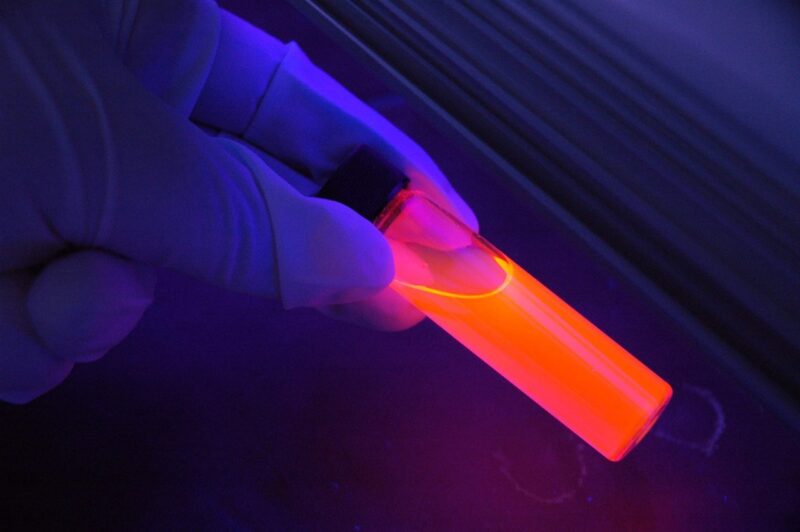How Mathematics Helps Solve Mysteries in Forensic Science and Criminal Investigations
November 12, 2024

Mathematics is often seen as a purely abstract discipline, confined to the realms of classrooms and laboratories. However, in the world of forensic science and criminal investigations, mathematics plays a crucial role in unraveling some of the most complex mysteries. By employing mathematical concepts and techniques, forensic scientists can analyze evidence, reconstruct crime scenes, and even create profiles of suspects, ultimately contributing to the pursuit of justice.
The Intersection of Mathematics and Forensic Science
Forensic science is an interdisciplinary field that combines elements from various sciences, including biology, chemistry, and physics. Mathematics serves as the backbone of forensic methodologies, enabling precise measurements, statistical analyses, and data modeling. The ability to quantify evidence and calculate probabilities provides investigators with the tools they need to make informed decisions.
Mathematics is applied in numerous aspects of forensic science, such as:
- Bloodstain Pattern Analysis: Mathematicians analyze bloodstains at crime scenes to determine the angle of impact, velocity, and even the position of the victim and assailant during the moment of violence, using geometry and physics to reconstruct events.
- DNA Profiling: Statistical methods allow forensic scientists to calculate the probability of DNA matches between suspects and crime scene evidence, enabling them to assess how rare or common those DNA profiles are in the general population.
- Ballistics Analysis: By applying mathematical principles, forensic ballistics experts can analyze the trajectory of bullets, determine shooting angles, and even ascertain the distance from which a shot was fired.
Understanding the mathematical principles involved is vital to making sense of evidence collected during investigations.
1. Bloodstain Pattern Analysis
Bloodstain pattern analysis (BPA) is a critical aspect of forensic science that utilizes geometry to reconstruct violent crimes. Through detailed analysis of blood patterns left at a scene, forensic experts can deduce information about the events leading up to and during the crime.
Key Mathematical Elements in BPA:
- Angle of Impact: The angle at which a blood droplet strikes a surface affects its shape upon impact. By measuring the length and width of bloodstains, forensic experts can calculate the angle to determine the source’s location and movement at the time of the incident.
- Impact Velocity: The speed at which a droplet travels influences the size and shape of the resulting stains. Mathematicians utilize formulas that incorporate velocity to interpret the circumstances under which the bloodshed occurred.
- Area of Convergence: By plotting the trajectory lines of individual droplets, experts can identify the area where the bloodshed originated, providing valuable insights into the sequence of events leading to the crime.
Through these mathematical analyses, BPA acts as a powerful tool in creating a narrative around chaotic and violent events that might otherwise remain murky and unexplainable.
2. DNA Analysis and Statistics
DNA evidence is considered one of the most reliable forms of forensic evidence, but it is the application of statistics that elevates its significance in criminal investigations. DNA profiling techniques create a unique genetic blueprint for individuals, allowing forensic scientists to match samples found at crime scenes to potential suspects.
The critical mathematical concepts in DNA analysis include:
- Probability Calculations: Forensic statisticians assess the probability of a match between a suspect’s DNA and evidence found at a crime scene. These calculations take into account the genetic diversity within populations to indicate whether a match is coincidental or significant.
- Bayesian Statistics: The Bayesian approach helps in updating prior probabilities with new evidence. This method allows forensic analysts to adjust the likelihood of a suspect’s guilt as more data becomes available throughout an investigation.
- Population Genetics: Insight into the genetic structure of populations is vital to understanding the implications of DNA matches, aiding experts in determining how frequently specific DNA profiles occur in different demographic groups.
By leveraging these statistical principles, forensic experts can significantly increase the reliability of DNA evidence in legal proceedings.
3. Analyzing Ballistics
Ballistics, the study of the motion of projectiles, is another area where mathematics is indispensable. Forensic ballistics experts employ mathematical models to examine bullet trajectories, which can help determine the position of shooter and victim during the commission of a crime.
Here are some key math applications in ballistics analysis:
- Trajectory Calculations: The parabolic path of a bullet can be predicted using algebra and physics equations. Knowing the angle of elevation and the velocity of the bullet helps experts recreate the path and infer key scene dynamics.
- Range Estimation: By measuring the distance between the bullet’s entry point on a surface and the weapon’s firing location, forensic scientists can estimate the shooter’s distance from the victim, providing valuable evidence regarding shooting dynamics.
- Recoil Analysis: Mathematics is applied to assess recoil effects, aiding in determining what kind of firearm was used and the angle from which it was fired based on impacts and ejection patterns.
Combining these analyses allows forensic teams to create a comprehensive picture of the essential dynamics surrounding a shooting incident.
4. Digital Forensics and Data Analysis
In today’s digital age, mathematics is vital for analyzing digital evidence, such as electronic communications, computer data, and network traffic. Forensic computer analysts apply a range of mathematical and statistical techniques to examine digital footprints and reconstruct timelines of criminal activity.
The key mathematical areas include:
- Network Analysis: Graph theory and algorithms are significant in analyzing connections and patterns within network traffic data, helping to identify suspicious activity and contacts among suspects.
- Time Series Analysis: Mathematicians analyze time-stamped data from emails, texts, and social media to reconstruct timelines of events, providing a clear narrative of actions taken before, during, and after a crime.
- Statistical Sampling: When dealing with vast datasets, statistical sampling methods can help to analyze and draw conclusions without needing to examine every piece of evidence, streamlining the investigation process while retaining accuracy.
By utilizing these mathematical tools, forensic professionals can efficiently analyze digital evidence, making it easier to uncover the hidden truths behind cybercrimes and other illegal activities.
Conclusion
The integration of mathematics into forensic science and criminal investigations illuminates a fascinating dimension to the field. From analyzing bloodstains and bullet trajectories to deducing DNA profile probabilities and examining digital evidence, mathematical techniques enhance the reliability and accuracy of crucial evidence. By applying mathematical models and statistical analyses, forensic scientists can unveil truths that would otherwise remain concealed, playing a vital role in the pursuit of justice. Mathematics, therefore, stands not only as a scientific pursuit but also as a powerful ally in solving the mysteries surrounding crime and establishing accountability.
With the ever-evolving landscape of both crime and technology, the collaboration between mathematics and forensic science will undoubtedly grow stronger, paving the way for more comprehensive and effective methods of investigation in the years to come.







